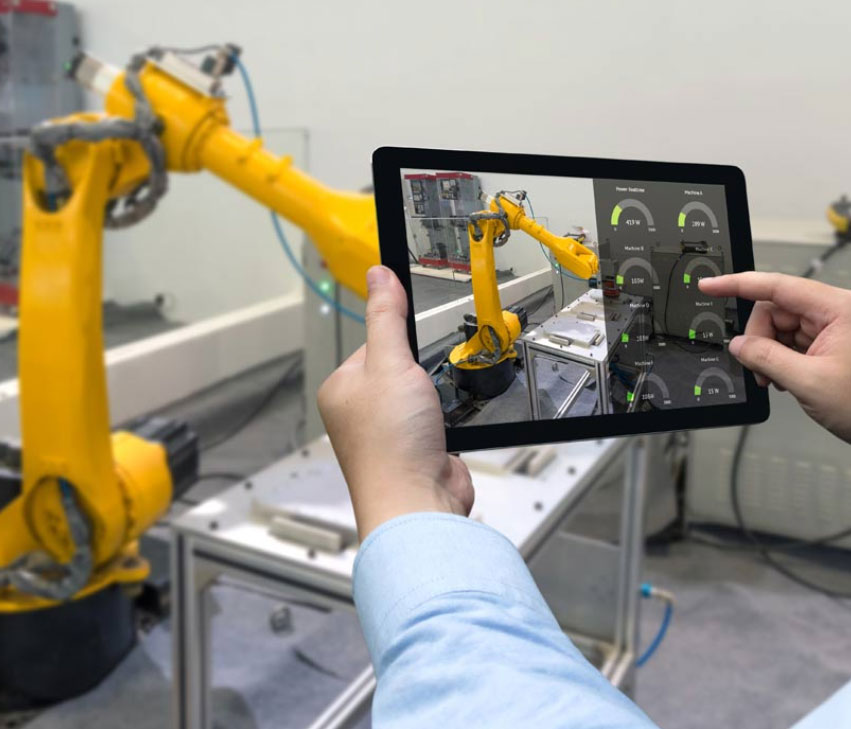COVID-19 has expedited the desire for companies to launch virtual technologies to increase efficiencies. Here’s what businesses need to know.
Even before the world even knew what Coronavirus was, a growing number of businesses and organizations across many industries were familiarizing themselves with new virtual technologies promising to cut costs out of the production cycle and substantially increase workforce efficiencies.
This technology is known as Augmented Reality (AR), and its sister technology, Virtual Reality (VR).
AR is a promising new technology that can help improve both the way business operates as well as how the business or consumer customer experiences products and services. For many, however, it is still a concept that hasn’t become a reality just yet, even though a recent survey showed that businesses are entering the planning and implementation stages with more frequency.
Fifty-six percent of business leaders polled1 said they have implemented some form of AR/VR technology into their organization over the last 12 months, and another 35% said they are considering doing so. More than a quarter (27%) said they have fully deployed an AR/VR solution and are looking to scale further.
AR is a technology that transforms how information is captured, managed and communicated, both within a business and with its prospects and customers. It can significantly improve the way a business conducts collaborative engineering design reviews, sales and marketing, field service, skills transfer and manufacturing.
The AR market is expected to be worth $61 billion2 USD by 2023, and it will be dominated by large tech companies like Google, Samsung, HTC, and Microsoft.
So, what does a business need to know about AR? For starters, it’s good to know that the earliest advantages of AR come from virtual supplemental productivity on the manufacturing floor; virtual training modules; virtual customer visits; and virtual design and engineering. To get significant and early returns out of AR/VR, businesses should work with a technology provider to map their operational needs to one of these four areas.
Consider an automotive manufacturer that needs to keep production cycles flowing yet keeps losing plant workers who are getting sick from Coronavirus. The automaker could utilize AR/VR technology to assist the buildout of cars on the production line, as well as virtual tools to help design new vehicles from remote locations. AR technology can also be used by consumers who want a series of different interior looks overlaid on their smartphone device when building their ideal car online.

Manufacturers today are quickly ramping up their virtual technologies to maximize production during COVID-19.
Enterprise-grade high-quality AR/VR platforms require both performance and scale. However, existing systems such as MS HoloLens and others are severely limited in both aspects. Most enterprises have a rich repository of existing complex 3D CAD/CAM models created over the years. These 3D models may vary in their complexity (such as poly count, hierarchy, details, etc.), making it difficult to run on standalone devices, restricted by device limitations.
Businesses need to know that as these virtual environments become richer and larger, the problem of scalability continues to compound. This cycle is repeated for each of the different hardware platforms, making it difficult for any enterprise to move from experiments and pilots to full-scale deployable solutions, thus stunting the speed of innovation and effectiveness.
The device limitations also severely restrict the capability of existing AR/VR systems to generate and work within most cloud environments, which is essential to collocate and precisely fuse the virtual objects on top of physical objects in the real world with complex surfaces, and varied lighting and environment.
Businesses are overcoming this significant challenge by partnering with AR/VR platform providers that leverage distributed cloud architecture and 3D vision-based AI. These cloud platforms provide the desired performance and scalability to drive innovation in the industry at speed and scale.
Businesses today are experiencing the next wave of technology innovation that will fundamentally alter the way they operate. This transformation is primarily driven by merging of the digital and physical world to create a better, smarter and more efficient way of operating. Immersive technologies such as AR/VR are playing a pivotal role in this transformation. The organizations that take a leadership role will be the ones that not only leverage these technologies, but they will partner with the right technology provider to help scale appropriately without having to stunt technological growth.

Dijam Panigrahi
About the Author:
Dijam Panigrahi is Co-founder and COO of Grid Raster Inc., a leading provider of cloud-based AR/VR platforms that power compelling high-quality AR/VR experiences on mobile devices for enterprises. For more information please visit www.gridraster.com.
In this episode, I sat down with Beejan Giga, Director | Partner and Caleb Emerson, Senior Results Manager at Carpedia International. We discussed the insights behind their recent Industry Today article, “Thinking Three Moves Ahead” and together we explored how manufacturers can plan more strategically, align with their suppliers, and build the operational discipline needed to support intentional, sustainable growth. It was a conversation packed with practical perspectives on navigating a fast-changing industry landscape.